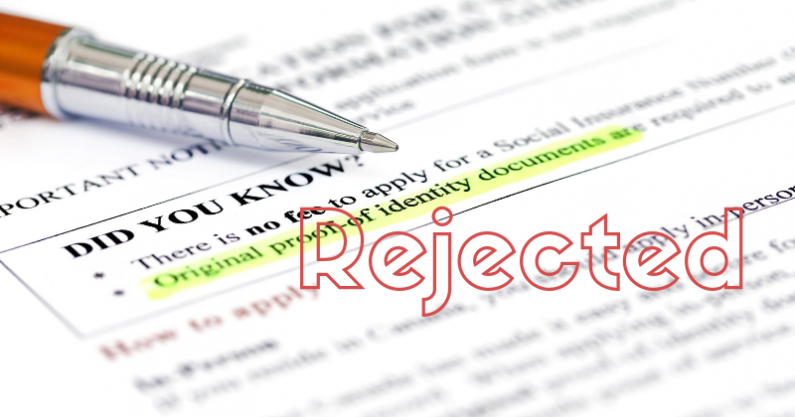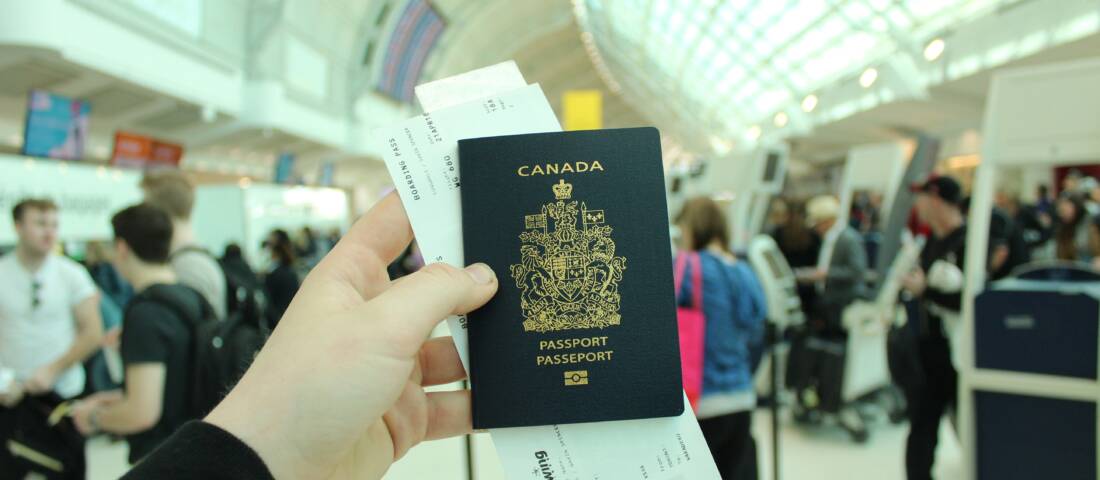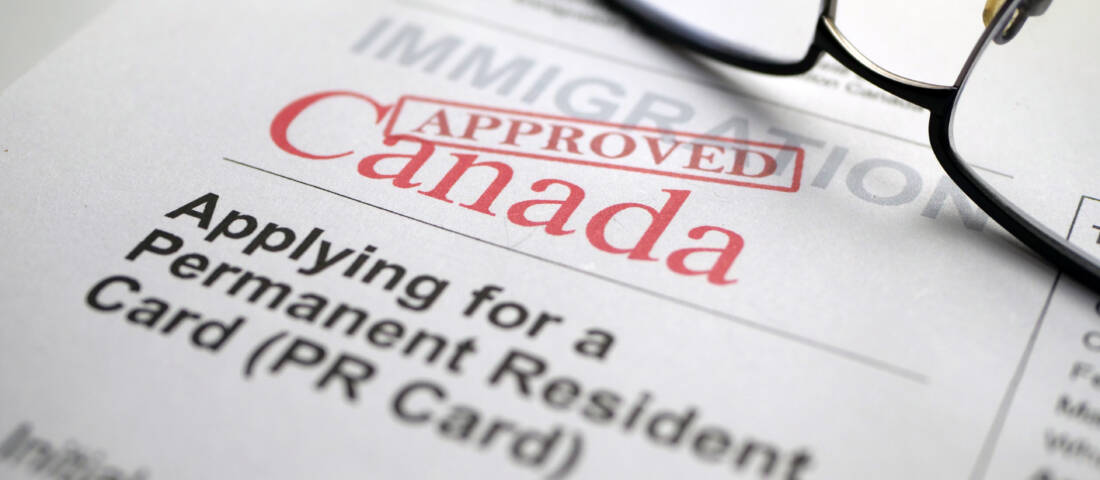BOOK YOUR FREE CASE EVALUATION
I’ve been practicing Canada and U.S. immigration law for over 20 years and I’ve seen a lot of simple errors that lead to rejected applications and long delays in processing - resulting in wasted time and money. Here are the top 10 errors you can avoid when submitting your application for Canadian permanent or temporary residence.
Top 10 Canada Immigration Application Mistakes
1. Not Signing the Application Forms
It happens all the time. A form is not signed where the applicant is required to sign. For example, the Additional Family Information form can require up to 3 signatures on one page. Often people sign the bottom of this form and miss the fact that 2 other signatures are also required, depending on whether there is a spouse or children. Failing to sign this (or any other immigration form) properly means a returned file weeks (or even months!) after it has been filed.
Another example is a form that has a section that requires signatures only if a translator was used. If no translator is used and you mistakenly sign in this spot, your application will be rejected and sent back to you at some point in the future.
Triple-check your immigration application forms and sign where required - and only where required.
2. Paying the Fee Incorrectly
Different immigration streams require different methods of payment. Your payment options will depend on where are you are paying from, and what you are paying for. You may be able to pay online, through a bank draft, by certified cheque or money order.
For example, if you pay the Right of Permanent Residence fee by bank draft to the foreign visa office, it will likely be returned to you and delay your application as typically this fee is paid online in Canada.
Many visa offices will accept the equivalent fee in your local currency, but you must check the specific website for that office to determine the amount of the fee in local currency – do not simply use the current exchange rate – it won’t be the same.
Be sure to pay the correct amount. An incorrectly paid fee will delay your application or have it returned to you.
Be very careful how you pay your fees and the amount you have to pay.
3. Correct Size Photos
Application instructions require photographs in a specific size listed in the IRCC instructions for your specific type of immigration application. Photos must to be a certain size in order to fit on forms that IRCC requires, such as medical forms for permanent resident applications, and as part of your visa documents.
Not sending the correct size of photograph will have your immigration application returned to you.
4. Providing Only Those Documents Listed on the IRCC Checklist
Why not just provide exactly the documents that IRCC asks for on their immigration application checklists? Because sometimes the listed documentation is not enough to have your application approved, and IRCC will not approve your application.
For example, if you are a common law couple, I’ve found it is important to provide affidavits from friends and family attesting to your relationship and stating that it is exclusive, committed and marriage-like. Letters of support can also be effective in certain circumstances. For example, if a couple from overseas is planning to move to Canada under a sponsorship application, a letter or affidavit from a family member in Canada offering lodging while the couple establishes themselves in Canada can make an application go smoother and a lot faster.
Additional evidence to submit with your immigration application depends on the facts of each case, but phone records, bank records, lease records, correspondence, text messages, Facebook messages, etc can be very helpful in moving the application forward and getting a positive outcome.
5. Supplemental Forms for Certain Countries
Residents or citizens of certain countries are often required to provide additional forms or information which are not obvious on the initial immigration applicat forms.
Examples are the Residency Questionnaire required by people living in Abu Dhabi, United Arab Emirates, and the Education and Work Experience Questionnaire required by those in Islamabad, Pakistan.
Be sure to include any required supplemental information forms for your immigration application or risk having your application sent back to you or having serious delays in the decision-making process.

6. Providing Misinformation or Not Explaining Missing Information
Providing misinformation in an application is a serious offence is Canadian immigration law. IRCC relies on information provided by the applicant to make a decision on the file, and it expects that the information provided be truthful.
The consequences of providing misinformation are a rejected application and a possible for exclusion from Canada for at least 2 years or more.
The difficulty is that even innocent errors can be considered a misrepresentation which can sink your Canada immigration application immediately.
If your application is missing information that was requested by IRCC it is important to explain why the information is missing and when it will be provided. Otherwise, your application will be sent back to you.
7. Illegible Handwriting on Immigration Application Forms
All application forms can be completed online or using a computer and Adobe Reader, which is a free program. However, some individuals may choose to complete the forms by hand, which is never advisable.
Hand-written forms may not be legible to the visa officer reviewing the file. As a result, the application will be returned if the visa officer is not absolutely certain about the answers provided to questions in the forms.
Equally important, hand-written forms cannot be verified. A verified form, using Adobe Reader, creates a series of barcodes that IRCC can quickly enter into it's computer systems. A hand-written application form requires tedious transfer of information which may delay processing of the file in a timely manner.
Another benefit of using a computer to complete your immigration application forms is that you can save them to your hard-drive and print the forms if needed in the future, or update any forms at the request of a visa officer. Updating forms is much easier when they are saved on a computer versus hand-written.
8. Failing to Provide a Cover Letter
Although never fatal to an immigration application, failing to provide a cover letter may result in processing delays.
A cover letter establishes who is applying for what, and the main reasons why the applicant qualifies for immigration, which makes reviewing the application easier for the visa officer - which results in faster processing in my experience.
I never submit an immigration application without a detailed cover letter asserting the applicant’s right to immigrate to Canada under current law and policy.
9. Waiting for Criminal Record Checks to File the Application
Often immigration applicants will wait for criminal record checks before filing an application. This is often not advisable.
Unless the application is for a Temporary Resident Permit or Criminal Rehabilitation, a criminal record check is not required to process the application. A criminal record check applies to admissibility, not to qualifications for entry. You can submit your application immediately, then submit the criminal record check when it comes weeks or months later.
What is the risk of waiting until the criminal record checks arrive before submitting an application?
Anyone who has followed the Canadian immigration system lately has seen the multitude of changes that have happened in a short period of time. If you wait too long to submit an application, the rules may change and suddenly you may no longer qualify; such as applications for the Federal Skilled Worker category, where some years an occupation qualifies, then suddenly it does not qualify.
10. Mailing the Application
If IRCC asks you to mail the application to the appropriate office for processing, it is best to use registered mail, or even better, a courier service. This allows you to track the application and have proof that it arrived at its destination.
Mail can get lost and you may spend weeks or months wondering why IRCC has not acknowledged receipt of your application, only to discover that it never arrived.
Mistakes in your Canada immigration application can cost you time and money - and may result in rejection of your application. There is no guarantee of success, but avoiding these 10 immigration application mistakes will give your application a better chance of success.
This post does not constitute legal advice – you should consult with a lawyer so he or she can evaluate your unique circumstances and application materials.








